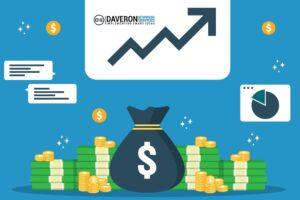The human brain is one of the best creations of this universe. It is capable of outlandish things and is always running to explore new fortes to evolve and grow with each passing day. Our brains come up with new ideas around anything and everything, and that’s how the world runs. But, how do we know if it’s fruitful or not? Well, this is why we execute a feasibility study.
A feasibility study is conducted during the embryonic stage of the business when the business plan is ready and you’re set to kick-off the project to expand and earn. An in-depth business feasibility study covers the who, when, what, where, and how of your project. It is a substratum phase of any business and paints a predictive picture of whether the venture idea is feasible or not. A business feasibility study aims to assess all the strengths, weaknesses, opportunities, and threats of a suggested project or business idea. It also lists all the resources needed for the project with the project definition, some background details, market research, financial data, and many more important points.
What does all a Feasibility Study include?
This detailed report is for your business projections and assists you in your decision-making process. It includes:
- A detailed summary of you and your business plan/idea.
- A precise description of your business idea.
- Market analysis.
- Financial and operational feasibility.
- Technological requirements.
- Resource requirements.
- Location analysis
- Financial projections.
7 Easy Steps to Conduct a Feasibility Study
1. Preliminary Analysis
It’s the first step to cover when planning a feasibility report. This step is then divided into two phases, i.e., drafting the project & the plan behind it, and the predict obstacles the business may face in the future. The first step clearly defines the USP of the project, and the second outlines the problems. It is done to ensure that you have enough funds to tackle unsought circumstances.
2. Predict Income Statement
To see results and analyze whether your business idea is a success, you need to examine the numbers your venture is earning. Any business is successful if they make more than the investment, and that’s what you need to cover in this step. Here, you’ll state a number that you plan to attain within a definite period, and you’ll also make plans for further earnings and calculate how much you need to invest to crunch those figures.
3. Market Analysis
No matter how innovative your business idea is, no one’s going to purchase from you if you don’t serve your target audience. Analyzing the market is one of the crucial steps for preparing a business feasibility study. Your market research will include a demographic and psychographic profile of your target audience and give you an insight into how much you can make earn out of it. It will also give you a vivid picture of your market share, your competitors, and how you can direct your TA to your business.
4. Hierarchy and Operations
The next step of your feasibility assessment is to define the hierarchy of your business. This point will clear who’s responsible for a particular activity and the entire workflow. It is done to avoid any unnecessary conflicts during the work.
5. Opening Balance Sheet
Just like any other balance sheet, in this step of the feasibility report, you need to calculate the exact assets and liabilities before you start. Your balance sheet may include details like sources, costs, purchasing land, office rents, equipment financing, staff hiring, training costs, etc.
6. Review and Analysis
It’s the pre-final step of any feasibility assessment. Here, you analyze all your data, cross-check all the numbers and see if everything’s in place. You also predict risks that you may face and decide if it is worth it or not.
7. The Final Step of your Feasibility Study — Yes or a No
It’s the last and the final step. Here you decide if you want to go ahead with your plan. The steps you’ve covered will give you a fair idea of what to do next. Keep those stats at your fingertips, analyze everything, and make your decision.
The Bottom Line
Being an entrepreneur is not an easy task. You need to stand out of your competitors, be your boss, run errands, make money out of it, pay your employees, and whatnot. Voyaging this turbulent journey without a business feasibility study is like throwing darts in the dark. If you feel you need help to prepare an accurate report, we’re here for you.
Our expertise and years of experience will provide you with the best possible solution.
Ready to grow your business? Speak to our growth experts and learn how to expand your customer base, drive revenue growth, and optimize your business operations.




